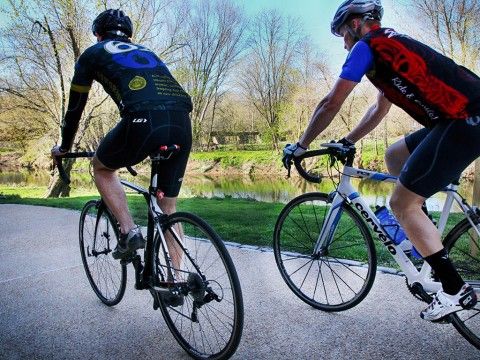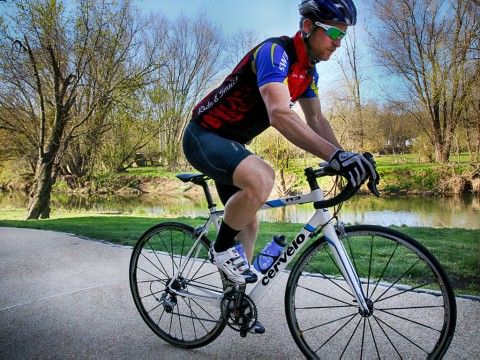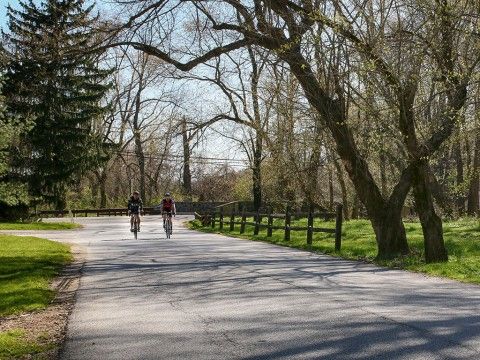
Welcome to the Bike the Brandywine Social Media Toolkit! Bike the Brandywine is an exciting ride that consists of an 80-mile or 40-mile loop in the beautiful Brandywine Creek Greenway. The Brandywine Creek is a major source of drinking water for nearly half a million area residents, including Downingtown, Coatesville, West Chester, and Wilmington, Delaware. The Brandywine Conservancy has worked for nearly 50 years to help preserve water quality and quantity in the region. Connect your wheels with the water on this scenic ride. Proceeds from the ride benefit the Conservancy’s clean water programs.
The Brandywine Conservancy is partnering with 25 municipalities, the Western Chester Chamber of Commerce, and the Chadds Ford Historical Society for the ride, and we greatly appreciate your assistance with helping us get the word out!
Planning for Bike the Brandywine is supported by the William Penn Foundation.
Hashtags
#BikeTheBrandywine
#MyBrandywine
#BrandywineConservancy
Photos
Click on thumbnails below for full-size images. All photos courtesy the Brandywine Conservancy.
Downloads
Bike the Brandywine Logos: Primary logo (PNG) | Primary Logo with date (PNG) | Banner logo (PNG)
Facebook photos: Cover Photo (JPG)
FAQs
Q. Is this is a race?
A. No. There is no timing of riders or awards for getting back first. The ride is designed to be enjoyed at a pace that allows you to take in the beautiful scenery and landscapes that you will pass along the way.
Q. Does the ride take place if the weather isn’t great?
A. Yes. The ride takes place RAIN or SHINE. In the event of rain, you are advised to take extra care as roads may become slippery, especially going downhill or in areas of painted road. In wet conditions, gentle pumping of your breaks is safer than applying sudden and heavy force to your break. It is also safer to favor your rear break in wet conditions as you are less likely to lose control. During a storm that may produce lightening, riders are encouraged to take shelter until the storm passes. All support services will continue in wet weather.
Q. Does anything cancel the ride?
A. In the unlikely event of flooding and/or hurricane/tropical storm warnings, the ride will likely be cancelled. Organizers will make every effort to keep riders informed in the days leading up to the ride if such conditions look likely. Unfortunately, registration fees are non-refundable if the ride is cancelled.
Q. Will the roads be closed for the event?
A. No. This is an open road event so you can expect to be sharing the road with motorists. Event organizers have chosen a route that utilizes some of the quieter roads of the Brandywine watershed, so traffic should be relatively light. Event organizers will also post signs along some of the busier roads prior to the ridewarning motorists that cyclists will be utilizing the roadways during the ride time. The ride also highlights two major paved multi-use trails in the area (E. Branch Brandywine Trail and the Struble Trail) so those sections will be free of motorized vehicles. Major intersections will be policed by volunteers or a flagger force to ensure the safety of riders.
Q. Are the rides hilly? And will I need to train for this event?
A. Those who are familiar with Chester County will know that we are blessed to live in an area with varied terrain. While the rides are not extremely hilly as we have tried our best to follow the Brandywine Creek as much as possible, there are several hills on both the 40 mile and 80 mile route. However, these routes are less hilly than many other routes you could travel in the Brandywine valley. Given that we will be travelling against the flow for the first half of both rides, the majority of elevation gain takes place during the first half of each route when your legs are fresher.
Eighty miles is a considerable undertaking, even for a fairly seasoned cyclist, so you should plan on preparing in advance for the event with some training. Training over a course of a couple of months, with longer rides on the weekends, will put you in a position to enjoy the ride to the fullest. Those undertaking the shorter route should also plan on a training schedule to get the most from the day.
Q. I registered, but am no longer able to do the ride. Can I receive a refund?
A. Sorry, but registration fees are non-refundable. You are still welcome to collect your event t-shirt at either packet pick-up or the day of the ride.
Q. My t-shirt doesn’t quite fit. Can I exchange it for another size?
A. Sorry, but t-shirts are ordered based upon the size you designated on the registration form, so no extras are available.
Q. Are there maps and cue sheets for the ride?
A. Maps and cue sheets will be made available on the website around a week before the ride, and each rider packet will also contain a cue sheet for the ride the registrant selected. A downloadable .gpx file will also be available on the website during the week leading up to the ride.
Q. What should I have with me for the ride?
A.
1) Helmet – all riders must wear a helmet to participate in the ride.
2) Water bottles or hydration pack. Rest stops and the start location will have water and Gatorade to refill your bottles or hydration pack.
3) Spare tubes, patch kit, tire irons, pump or compressed air – SAG vehicles will have some spare items, but replacing items yourself will likely get you back on the road faster.
4) Ride-provided cue sheet. The cue sheet will help supplement ride signs and road marking along the way. It will also have emergency contact information.
4) Cell phone – this will allow you to communicate with ride organizers and/or the HELP number along the route. It’ll also help you track your ride with Strava or other application.
5) ID and any medical cards – just in case of an emergency.
6) Appropriate clothing for the weather.
7) Sunscreen.
8) Any specific snacks you may want to enjoy between rest stops (or if you have dietary restrictions).
Q. What should I NOT bring with me for the ride?
A.
1) Headphones. Riding with earbuds or headphones is strictly forbidden on the ride and is also against the law.
2) Your own support vehicle – in order to minimize the number of additional vehicles on the ride route and to maintain safety for all riders, having personal vehicles follow riders on the route is prohibited.
Q. What support services can I expect on the ride?
A. Rest stops will be provided every 10-15 miles along the course of both routes. Rest stops will have hydration and nutrition available to riders, bathroom facilities, a first aid kit, and communication with both Support and Gear Vehicles (SAG) and ride headquarters.
Q. What if I have mechanical issues along the route?
A. All riders should carry spare tubes, a patch kit, tire irons, and either a pump or air canisters to fix flats along the way. SAG vehicles will be travelling the course to help with more serious mechanical issues, and they will respond as quickly as they are able to, but they may be tending to someone else when you need them. You may also contact the HELP number on your cue sheet and ride organizers will do their best to assist you. You should be aware that serious mechanical issues may result in you having to abandon the ride. If this is the case, a support vehicle will bring you back to the start location in Chadds Ford. Again, these vehicles will be covering a wide geography, so please be patient as it may be some time before a vehicle reaches you.
Q. What if I feel I can’t complete the ride?
A. Your Cue Sheet contains a HELP number that you should contact if you feel that you are unable to complete the ride. Ride organizers will help in summoning a SAG or other vehicle to collect you and bring you back to the start. Given the wide geography of the ride, this may entail first being brought to the closest rest stop where another vehicle could collect you and transport you back to Chadds Ford. Support vehicles will also be traversing the route throughout the day and if they see a rider who is clearly in distress or in need of help they will stop and provide whatever support is needed. Your safety and well-being are our top concerns.
Q. What happens if I have an accident on the course?
A. For serious accidents and injuries, your first response should be to call 911 (it is best to ride with a cell phone for this reason).
For minor injuries and accidents, please follow the advice given in the previous FAQ. If the injury is minor, and you feel you can continue onto the next rest stop, first aid kits will be available there, as well as communication to ride headquarters and SAG vehicles.


